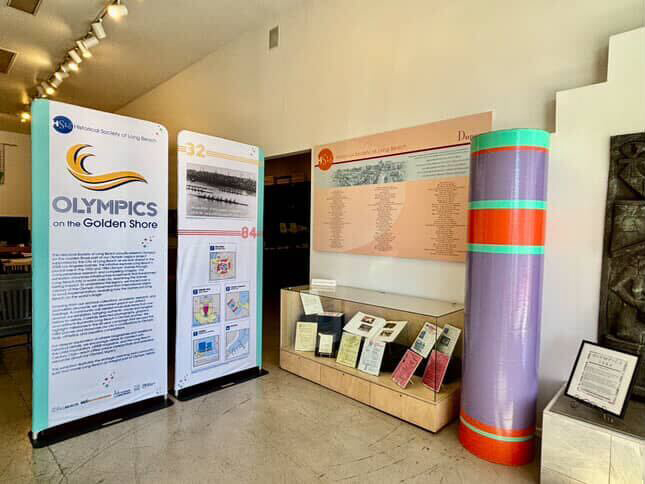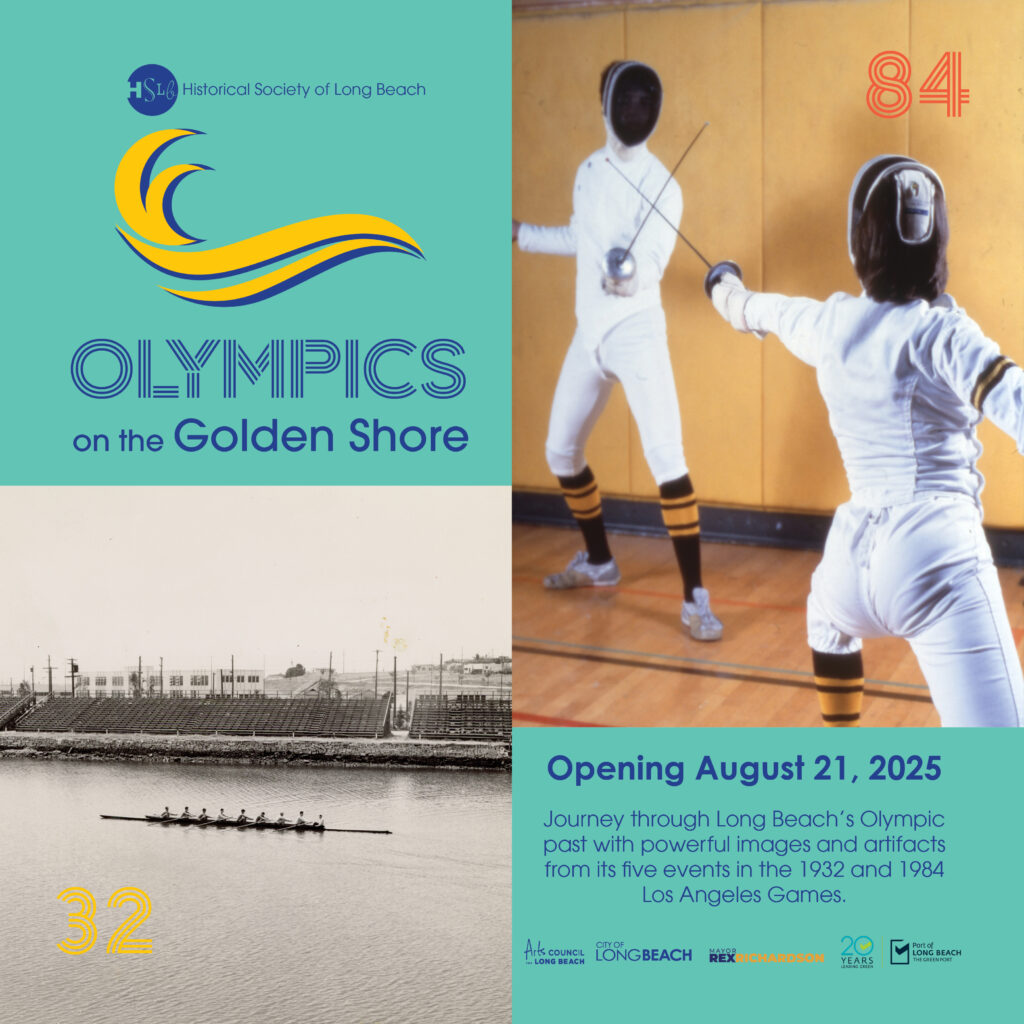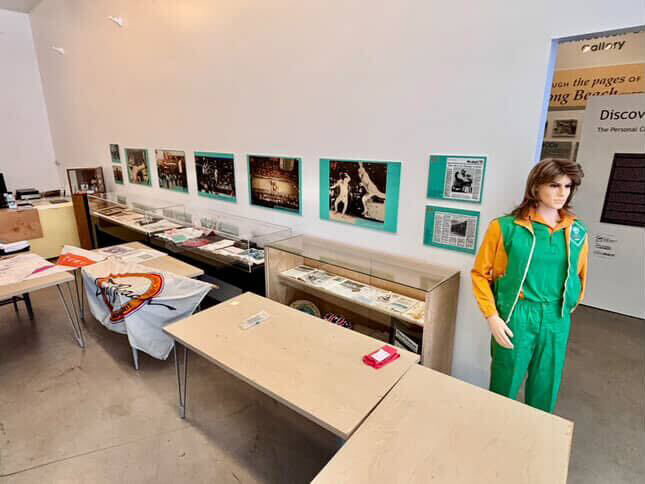In 1932, a Long Beach man climbed an oil derrick to get a view of the freshly revamped Marine Stadium. The writer, then strapped for cash, watched Olympic rowing — Long Beach’s sole event — from high up above the stands.
This story is one of many that will be shared at the Long Beach Historical Society’s new “Olympics on the Golden Shore” exhibit, which opens to the public today, on Aug. 21. Officially owned and financed by the city of Long Beach, the showing will be free to attend, and will eventually tour around the L.A. area.
“The ‘32 games really helped put Los Angeles and Long Beach on the map,” said Julie Bartolotto, the Long Beach Historical Society’s executive director. “This exhibit examines the history of the ‘32 and ‘84 games and their legacy.”
Armed with a $100,000 city allocation and significant archives, Bartolotto and her team of curators worked closely with the City Clerk’s office to unearth long-forgotten records of Long Beach’s role in the 1932 and 1984 games. The project has been in the works since October 2024, Bartolotto said.
And it’s not just a photo gallery. “We have a stuffed mascot, we have flags that were flown during the games,” Bartolotto added. “We have the uniforms that volunteers wore.” She was also sure to mention stickers and swimsuits from the games, which will be on display as well.
Long Beach will be playing a larger role than ever in the 2028 Summer Games, said Deputy City Manager Tyler Curley, who worked closely with the Historical Society on this exhibit. With 11 Olympic and seven Paralympic games to be staged across the city, the Historical Society is looking to connect the dots between past and present.

“The Paralympics are coming for the first time,” Curley said, “So for us, it’s about bridging that history of ‘here’s how integral we’ve been in the past, and then this time around, we’re even more a central part of the Paralympics and Olympics than we’ve ever been.’”
The Historical Society is also working on a historical report that “will also become part of the public record and archive,” Curley said. “So none of that gets lost again.”
The report will be available on the Historical Society’s website and will also be posted as a memo to the City Council, he added. “I think the report was around 100 pages,” Curley said. “So it’s a long report, but we’re hoping to make it a little more accessible.”

Despite Long Beach’s notable role in hosting past events such as rowing and archery, the city had little to show for its efforts until now.
“We don’t really have, like some locations have, monuments or those kind of things that people can like, see the history,” Jorge Godinez, assistant to the city manager, said. “It’s not a statue or a monument, but it’s something that allows us to go back and recognize all that history we have.”
The Long Beach Historical Society is at 4260 Atlantic Ave. The exhibit is open Tuesday, Wednesday and Friday from 1 to 5 p.m.; Thursday from 1 to 7 p.m.; and Saturday from 11 a.m. to 5 p.m.
Find more information at hslb.org.

